Launched in 2014, PhotoSparks is a weekly feature from YourStory, with photographs that celebrate the spirit of creativity and innovation. In the earlier 650 posts, we featured an art festival, cartoon gallery. world music festival, telecom expo, millets fair, climate change expo, wildlife conference, startup festival, Diwali rangoli, and jazz festival.
Bengaluru’s Karnataka Chitrakala Parishath recently hosted four exhibitions titled Shapes and Forms (Adithyaa Sadashiv), Reminiscenses (Bharathi Senthilvelan), Beyond Forms and Plain (Manjunath Honnapura), and Aakriti Art Goup (Preeti Prasuna, Poornima Avinash, Rosemary Christopher, Snigdha Panda, Samapika Satapathy).
Spread across four exhibition halls, the artworks represented a diverse range of genres, styles, themes, and messages. Some of the artists join us in this photo essay, sharing their journeys, techniques, pandemic experiences, and tips for aspiring artists.
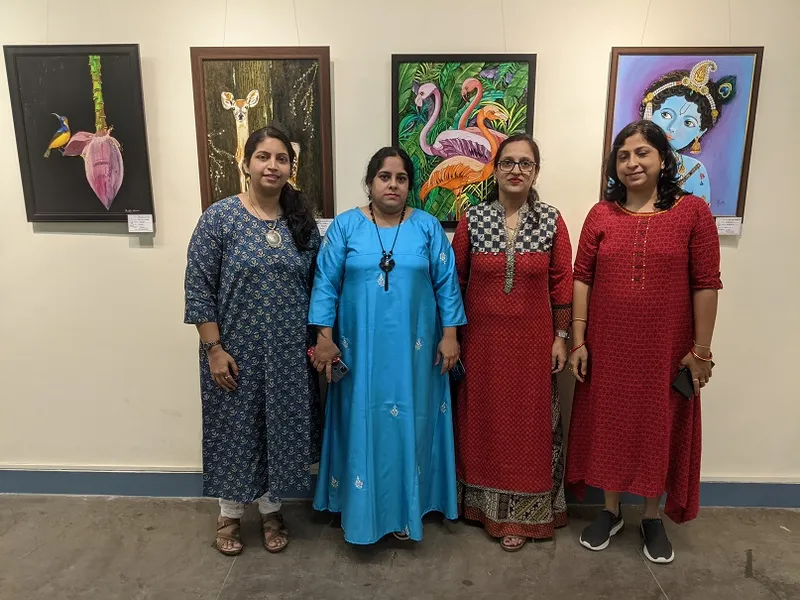
Aakriti Art Goup
Artistic journey
Bharathi Senthilvelan’s artistic journey started in childhood. “As a native of Kumbakonam, a town known for Chola period temples, exposure to artforms was natural,” she describes, in a chat with YourStory.
She has worked on paintings as well as animation, and has exhibited in group shows in Delhi, Kolkata, Pune, Bhopal, Bengaluru, Chennai, Coimbatore and Puducherry. She has completed over 100 artworks, and Reminiscences is her first solo painting exhibition.
Mixed-media artist Manjunath Honnapura has exhibited his award-winning artworks in group and solo shows, in India as well as the US and Bangladesh. Adithyaa Sadashiv has written and illustrated a book on artists, and held solo exhibitions in Goa and Bengaluru.
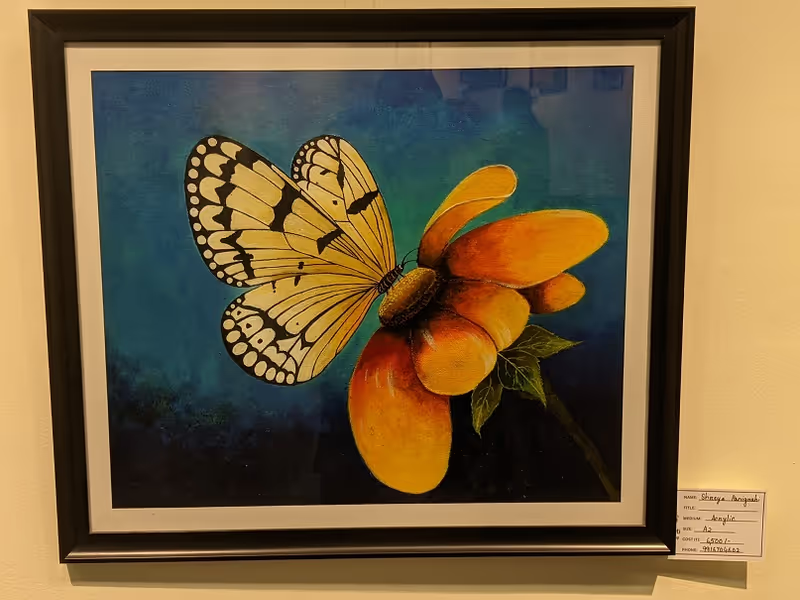
Art and meaning
“An artist is a creator or a maker. As compared to large-scale production, artistic creation is always one of its kind,” Adithyaa describes.
“I have followed the philosophy of working in silence and not being bothered about any disturbances caused by people or allowing it to affect my work,” he says. Such commitment and content will eventually shape the artist’s career and commercial outomes.
“For artists to create a work of art, they must be saintlike and the process must be meditative rather than mechanical,” he adds. He has been guided by his father, himself a renowned senior artist.
“Art is a reflection of experiences and imaginations of life streams,” Preeti Prasuna says. The other exhibiting artists described art as lifestyle or meditation.
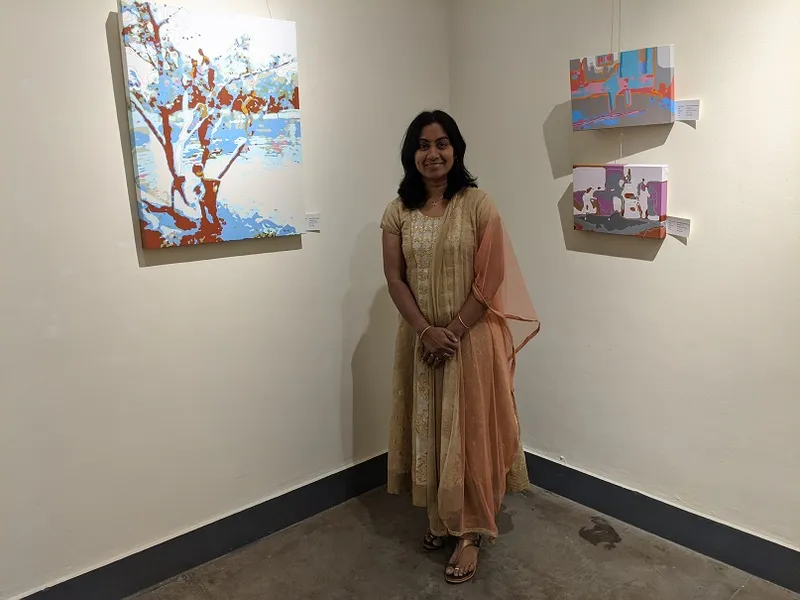
Bharathi Senthilvelan
Exhibited works
Adithyaa showcased 26 paintings, which he researched for the last six years. “Since the artworks of acrylic and watercolour were created using the similar wash technique, it took a lot of time and effort,” he describes.
The paper and canvas works are priced from Rs 25,000 to Rs Rs 90,000. He has also explored tantric elements in painting, such as the interaction between shapes.
For her exhibition, Bharathi picked paintings reflecting her childhood games. “These paintings will bring back smiles on viewers once they are able to recall those carefree days,” she describes. Her paintings are priced from Rs 12,000 to Rs. 1.2 lakh.
“I have taken clouds as inspiration while I created these artworks. During my long travels, I have always been fascinated by the changing forms of clouds, and my artworks also tease and disappear when observed closer,” she explains. The smaller works have minimal shades and are more abstract in nature.
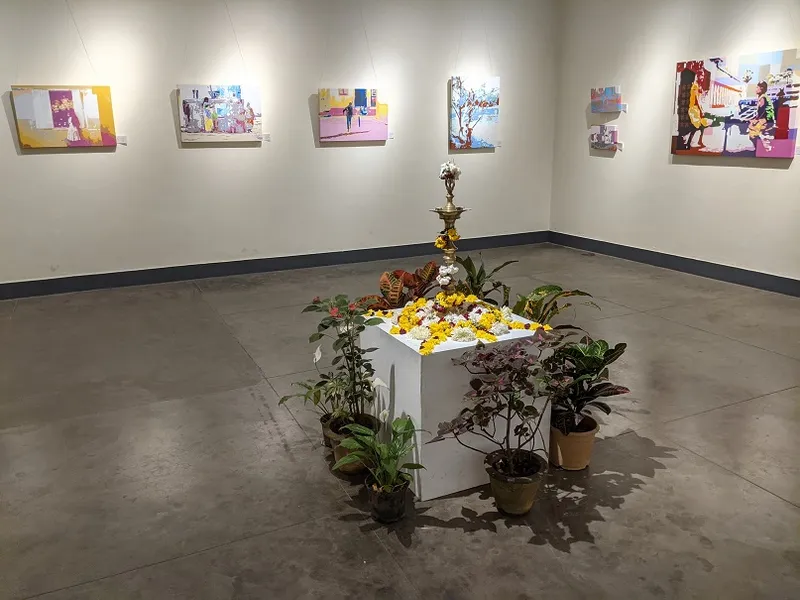
Creativity and failure
The creative journey is not smooth and linear, and is instead full of ups, downs, twists, turns, and even failure and mistakes.
“Exploration of art comes with trial and error. Mistakes and some failures also happen, which made me gain deeper experience and learn to improve exploration. Learning from failure helps experimentation with more confidence,” Manjunath Honnapura affirms.
It helps if artists have a guide or guru, according to Adithyaa. “I am fortunate enough to have my father who guides me through all the obstacles of the creative world so that I have the ability to face the challenges on my own someday,” he says.
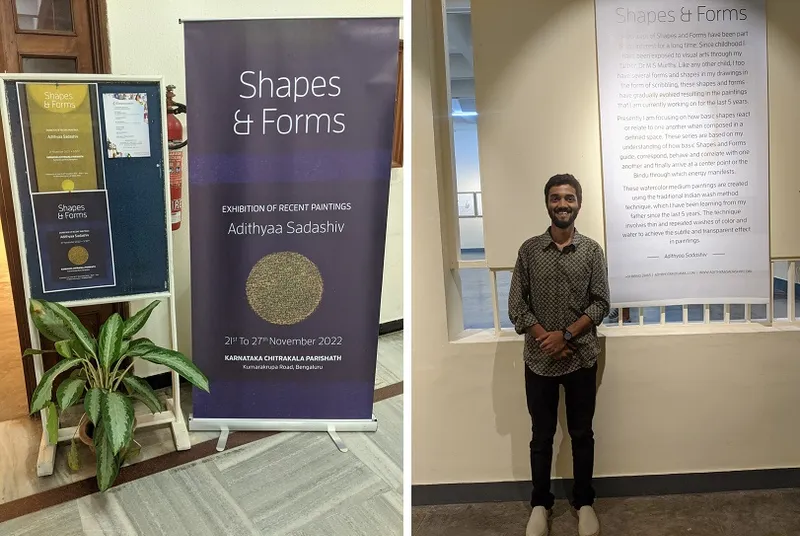
Adithyaa Sadashiv
“Mistakes are a source of learning, but artists should also let the artwork take its own shape and not be very rigid or conscious about the end result. Sometimes, mistakes and coincidences during work processes appear to be very elegant and beautiful,” he adds.
“In my opinion, we make mistakes but no failures. Every theme experimented by an artist is a new learning opportunity,” Bharathi explains.
“An artist needs to learn continuously and be bold enough to exhibit the work, facing both positive and negative feedback. That helps us to move ahead,” she adds.
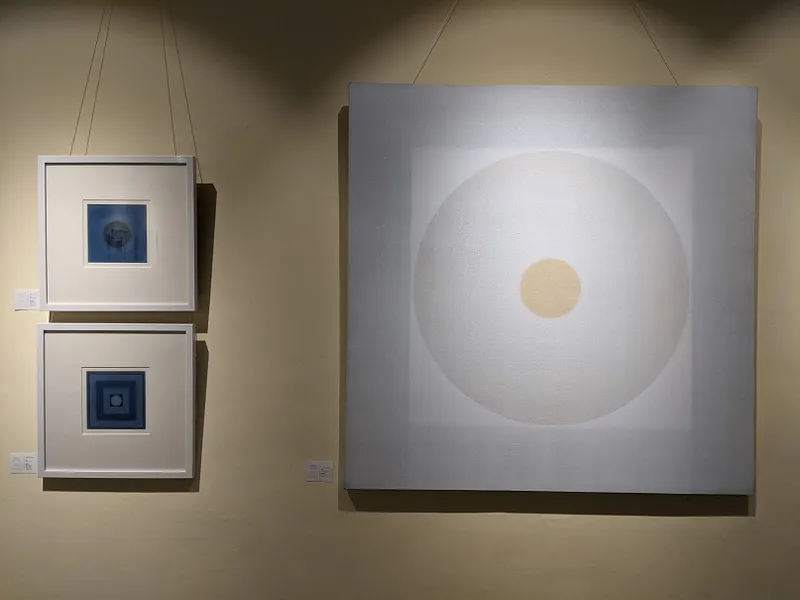
Pandemic resilience
For artists, the pandemic removed many opportunities for physical exhibitions and networking, but also opened up new avenues of exploration and online activities. Fortunately, galleries and festivals now seem back to normal.
“The news around us during the pandemic was so disturbing that it made all of us depressed. For me, art was the only solace during the hard times. I took time out for small sketches, which kept me connected with art,” Preeti Prasuna recalls. It was also a good time for family bonding, though there was less time for art.
“The pandemic was a period of developing new skills. I have learnt about creating virtual painting exhibitions and published my exhibition walkthroughs in my social media handles,” Bharathi recalls.

Manjunath Honnapura
“Financially, the pandemic restricted my work orders for art, and I am still trying to cope with it. Most of the artworks I was able to do during the pandemic reflect my experiences at the time,” Manjunath recalls.
“I started learning art during the pandemic. That was the time when art work gave me positivity,” artist-curator Samapika Satapathy says.
Adithyaa Sadashiv had just finished his first solo exhibition in Goa when the pandemic struck. “However, it did give me a good amount of time and space to work on my paintings as well as a few experimental films which went on to win awards,” he says.
“The silence within and even in the atmosphere helped me create meditative works that demand silence amidst our competitive and chaotic environment,” he adds.
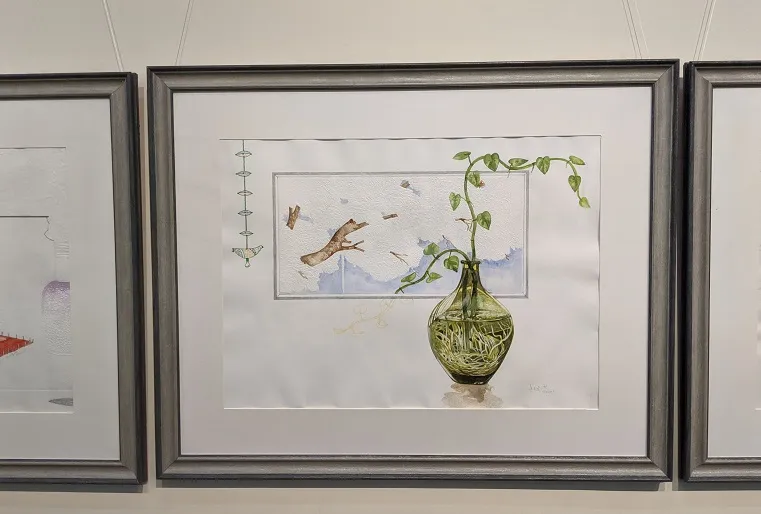
Art appreciation
The artists and curators also shared a number of insights into how art appreciation can be improved in society, and how audiences should not be intimidated by art.
“Promoting the artist community helps increase art appreciation across society. There should be more opportunities to showcase their work, and galleries should make exhibitions free or affordable,” Samapika Satapathy advises.
Public events like art camps, workshops, seminars, and exhibitions by government and the private sector also help, Manjunath Honnapura adds. National and international artist exchange programmes and residencies further contribute.
“While many people visit malls or shop online, they should also make an effort to go to galleries and exhibitions,” Preeti suggests. They should put effort into experiencing various art forms and meeting the artists.
“Audiences can be taught and educated how to look at art. Issues of ethics and philosophy also add credibility and justice to the artwork, which society should be aware of,” Adithyaa adds.
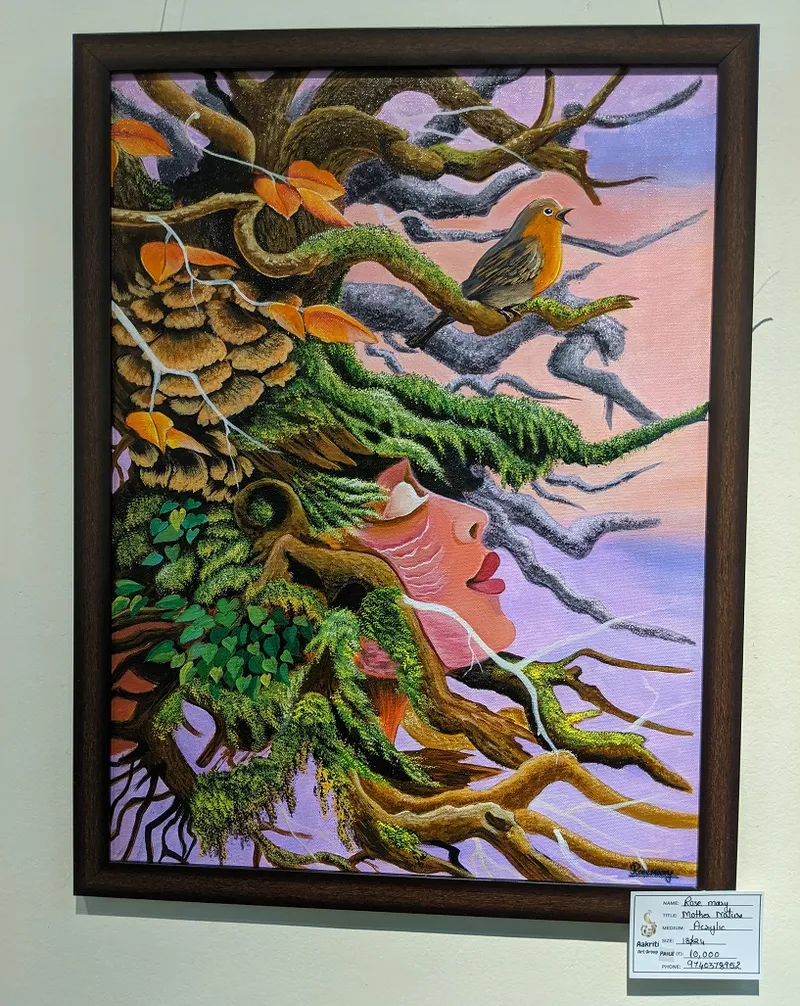
Audience engagement
Many audience members were engrossed in the artworks and asked for explanations as well, Adithyaa recalls. The meditative works forced onlookers to pause for a while and reflect on the art. “It was indeed a wonderful experience to observe and understand people and their opinions,” he adds.
“We received positive feedback from visitors for our group exhibition. We got some suggestions to group the artworks by themes, which will help the visitors connect to the art,” Samapika Satapathy says. Some of the artworks were priced from Rs 5,000 to Rs 10,000.
Audiences appreciated the versatility of the artists, Preeti adds. “Audiences also have immense imaginations. If their eyes can catch the life in my paintings that I wanted to capture, that would be an appreciation for me,” she enthuses.
Audience members provided suggestions on other cities to host his exhibition, according to Manjunath. “Art critics wrote good reviews in social media. I got increased confidence to explore more using different techniques and mediums,” he proudly says.
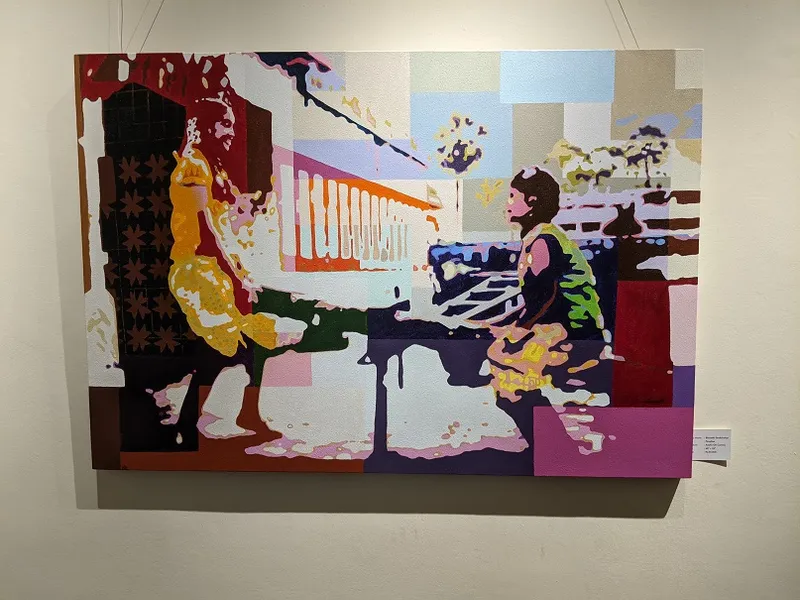
Creativity tips
The exhibitors also share a range of insightful creativity tips, particularly for aspiring artists.
“Do not seek only awards or appreciation, and do not be dejected when you are not able to create on the canvas what you had imagined. Continue the good work,” Preeti urges.
“Appreciate your own work first, find solace and peace in your art, and pride in your explorations. Success will automatically follow,” she adds.
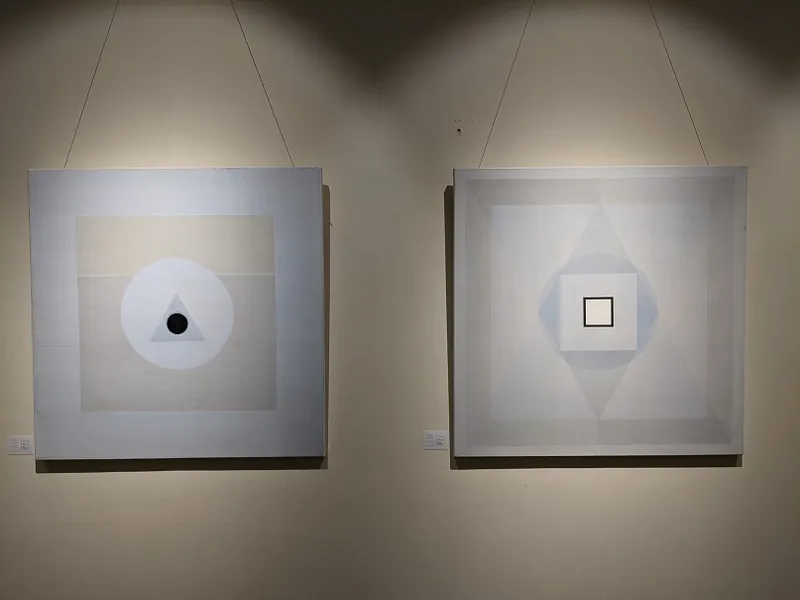
“Artists must be very true to their artwork, and this is possible only when they are true to themselves. Rather than imitating other artworks, artists must be able to convert the essence and influence into their own language or identity,” Adithyaa suggests.
“There is an inner growth when an artist truly appreciates fellow artists’ success without jealousy or prejudice,” he affirms.
“Never get scared of experimenting in art. Keep thinking of exploring different mediums with whatever is available,” Manjunath advises.
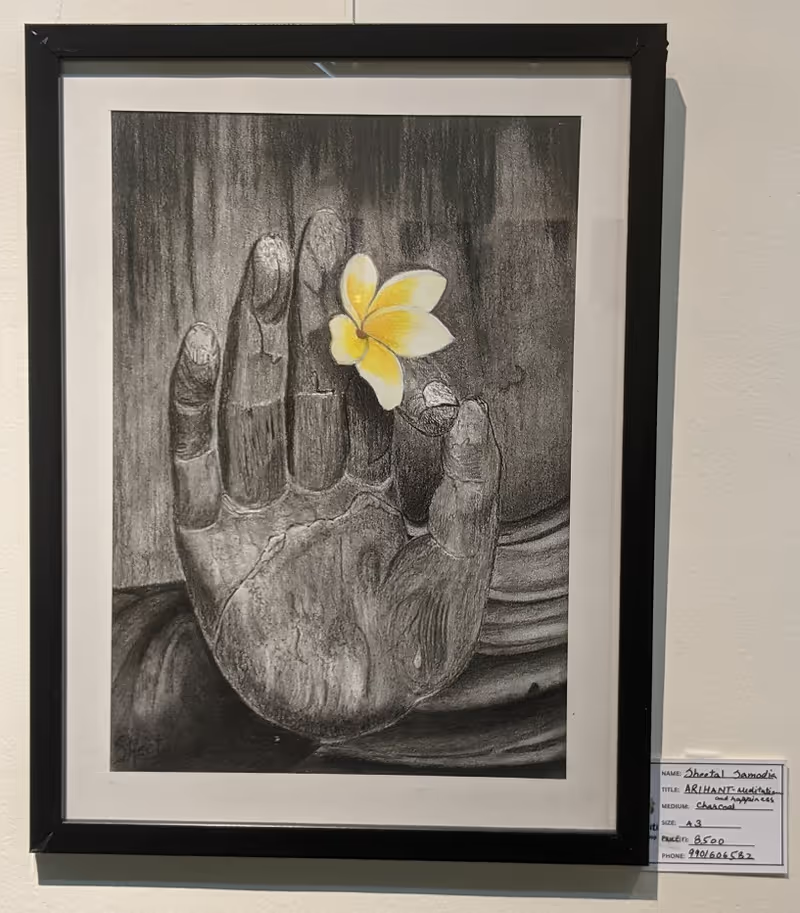
“Every artist has a challenge of discovering a unique style. This is even more applicable for aspiring artists,” Bharathi observes. She advises aspiring artists to visit galleries regularly.
“My mentor advises me to sketch daily, and spend at least threae to four hours on work. I believe long-term orientation in this field is needed,” she adds.
“Success is a byproduct of consistent efforts,” Bharathi signs off.
Now, what have you done today to pause in your busy schedule and find new avenues to apply your creativity?

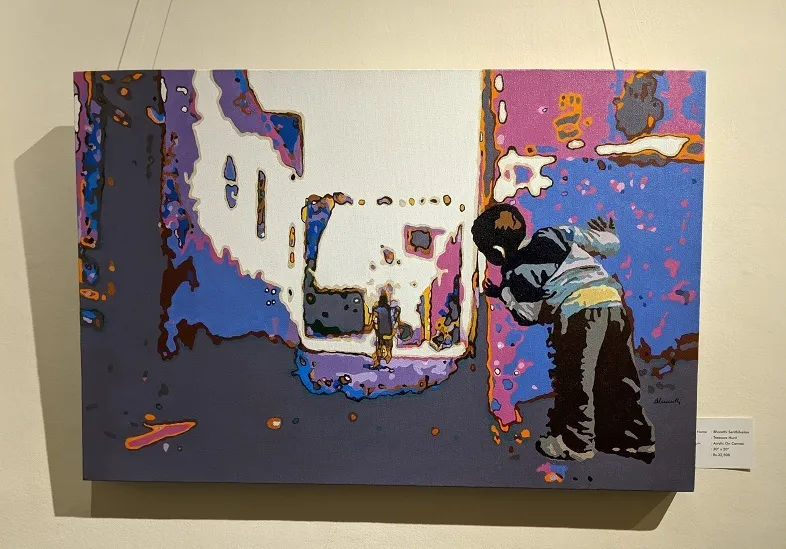
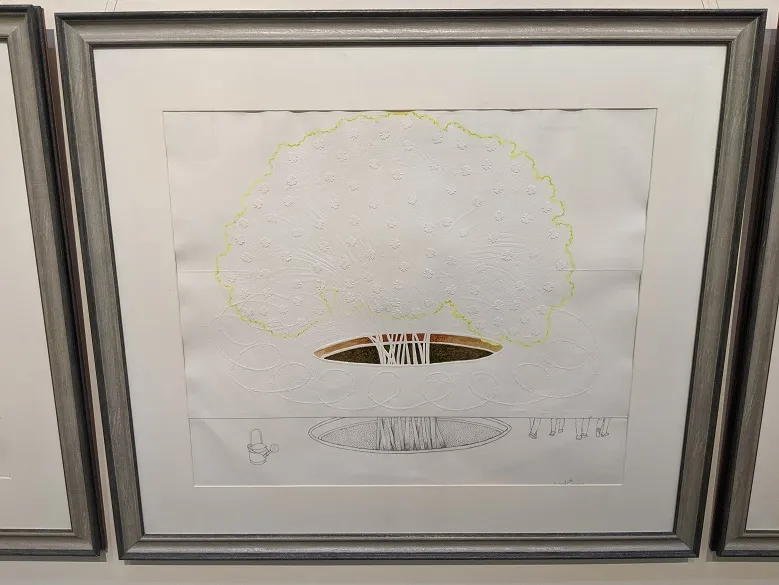
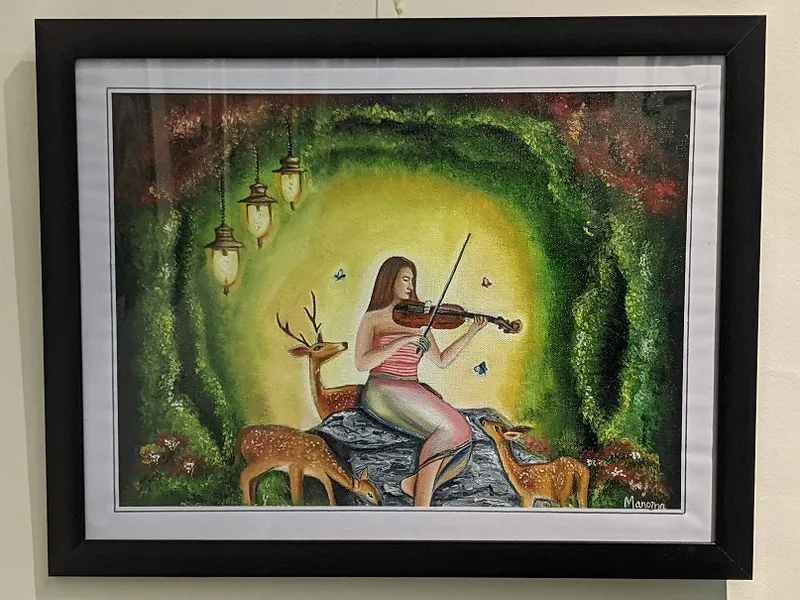
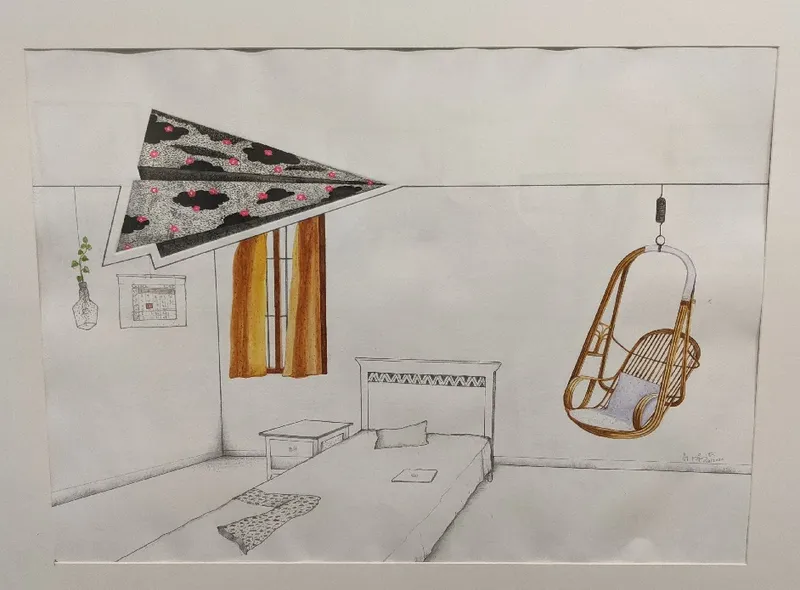
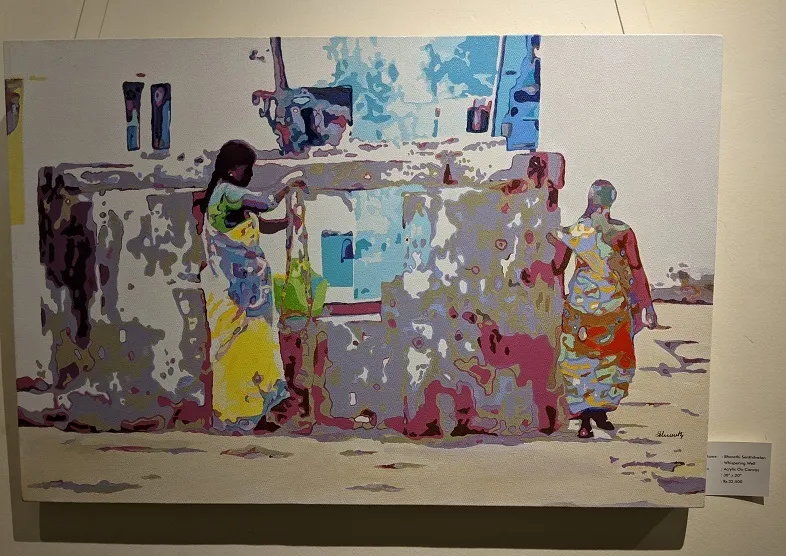
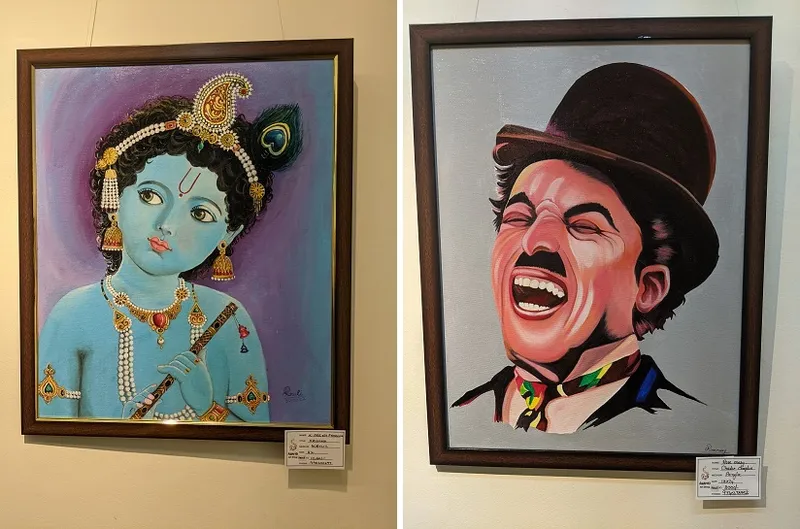

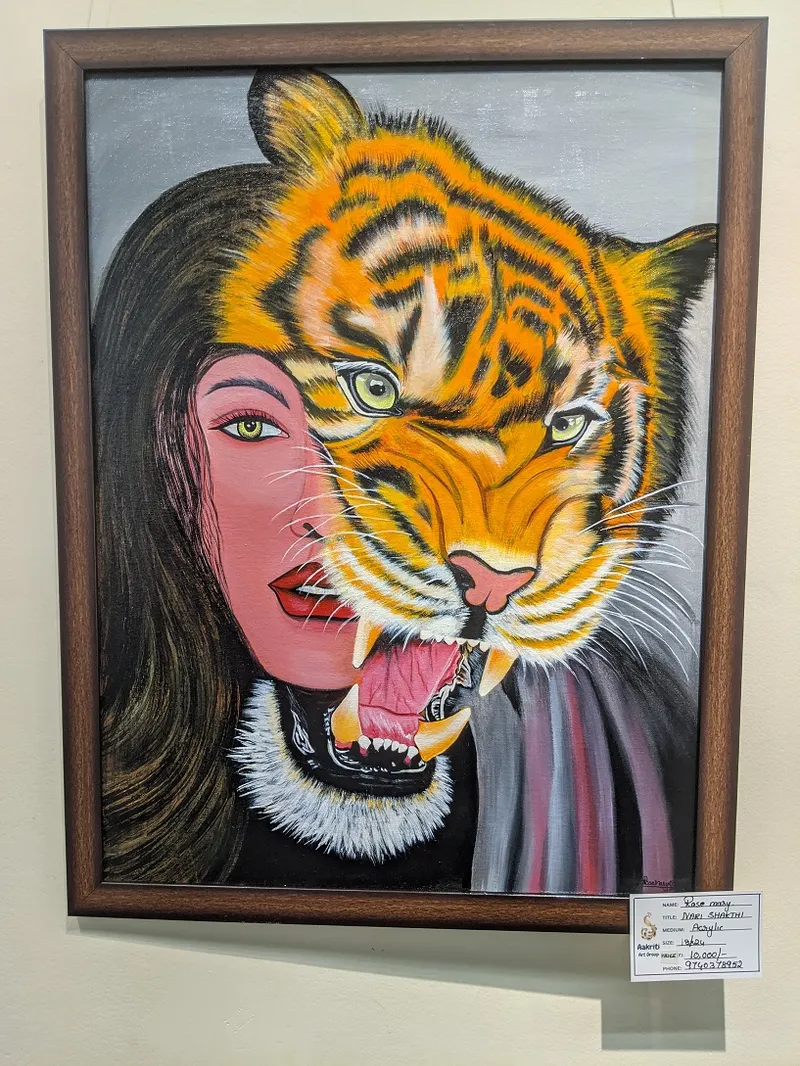
(All exhibition photographs were taken by Madanmohan Rao on location at the gallery.)
See also the YourStory pocketbook ‘Proverbs and Quotes for Entrepreneurs: A World of Inspiration for Startups,’ accessible as apps for Apple and Android devices.









